Average sizes and life expectancy for this breed:
Native to France, the Basset Fauve de Bretagne is a charming little hound breed that is slowly gaining popularity in the United Kingdom, even though they are still considered to be fairly rare. They are affectionate and energetic, yet kind and calm. While they are not as low to the ground as their Basset Hound cousins, they are similar in appearance as their bodies are longer than they are tall.
The Basset Fauve de Bretagne, also known as the Fawn Brittany Basset, is a lively purebred dog known for its short, wiry, red or golden coat. These dogs have many of the great qualities of a hound, however, they are not really considered to be guard dogs. They get along well with children and other dogs. But they are unhappy when left alone for long periods because they love to be active and involved in all household activities.
This is a hardy, cheerful dog that will bring many years of joy to your family as long as you give them all the affection and love they desire.
See available puppies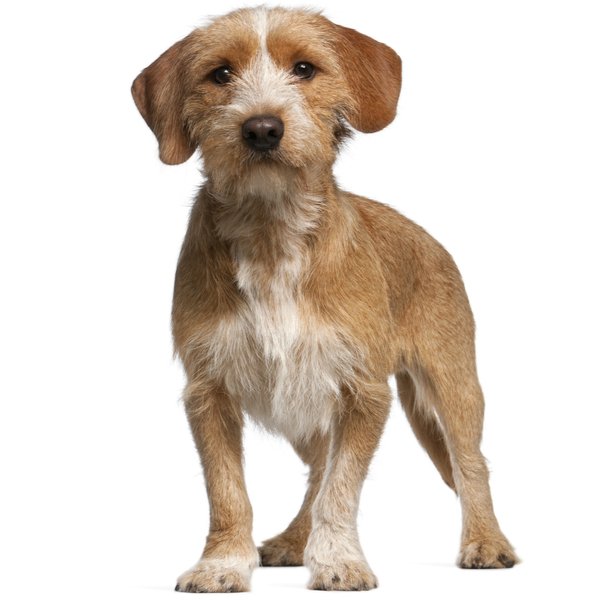

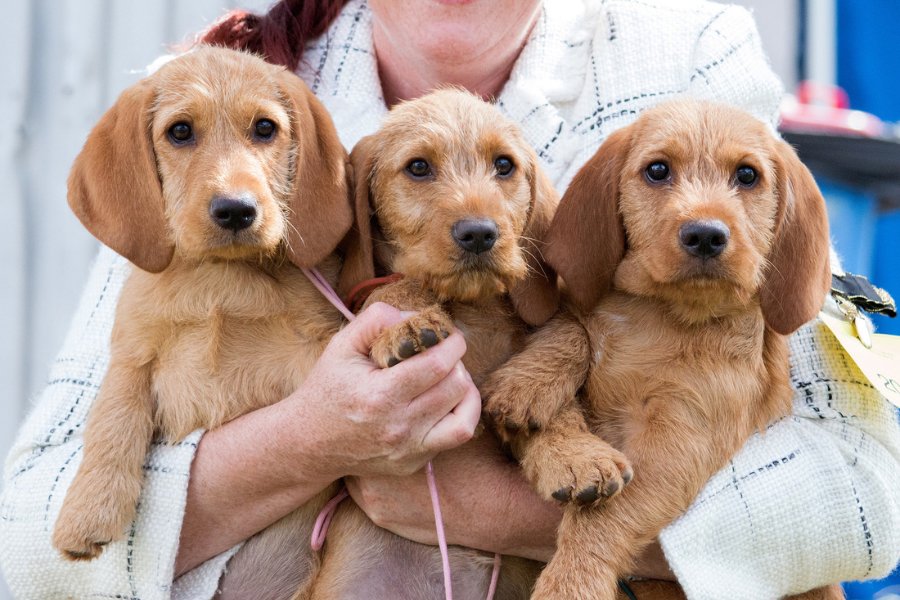


The origins of the Basset Fauve de Bretagne can be traced back to the 1500s as a descendent of the now-extinct Grand Fauve de Bretagne. In 1561, the Basset Fauve de Bretagne was described by Jacques du Fouilloux as a ‘natural hunter’ boasting a kind and even temperament. With this said, this dog breed is known to be one of the oldest French breeds around. They have always been highly prized in France not only for their hunting skills but also because of their easy maintenance, alertness, and affectionate natures. The Basset Fauve de Bretagne was particularly recognised for its ability to withstand temperatures as low as -6oC. As a result, this breed tends to struggle in warmer weather.
The Basset Fauve de Bretagne was featured in a French hunting journal called “La Chasse Illustrée” in 1869. This made them famous in the second part of the 19th century. However, during the First and Second World Wars, the number of Basset Fauve de Bretagne plummeted in numbers because of hardship. However, luckily, breed enthusiasts managed to save the breed from extinction.
In 1949, the Club de Briquet Fauve de Bretagne was established. During this time, breed numbers began to rise again, with more and more people in other parts of Europe becoming interested in their hunting skills.
The first individual to arrive in the UK was Naika Des Vieilles Combes from France in 1982. Several years later, three more Basset Fauve de Bretagne’s were imported from Belgium and the Netherlands. These four dogs were believed to be the only breeding stock of this breed established in the UK for years. However, in the early 1990s, an article was published in the ‘Dog Press’ highlighting the lack of bloodlines. Since then, several more dogs have been imported from France and Sweden to widen the breeding stock.
The Basset Fauve de Bretagne Club was registered with the UK Kennel Club in 1991. The breed was then granted championship status in 2007.


Basset Fauve de Bretagne’s are similar to their Basset Hound cousins because of their short legs and long body. Their moderately long heads are well-balanced with the top of their skulls, which is slightly domed. Their moderately long forefaces are slightly arched with a medium stop and strong underjaw. They have black or very dark noses with well-open nostrils.
These dogs have oval-shaped eyes that are dark hazel with a lively and alert expression. Their ears are set level with their eyes, and fold inwards but end in a point. They are covered in darker, softer, and finer hair than the rest of the body. Their necks are relatively short and very muscular. Their shoulders slope a little, and their straight front legs are well-boned. Some dogs may have a slight crook in the front legs, which is acceptable under the breed standard.
The Basset Fauve de Bretagne has a long body with a deep, broad chest and a very prominent sternum. Their well-rounded ribs are carried well back. They have a nice level topline and strong loins. Their muscular hindquarters are powerful and robust with tight feet, firm, hard pads, and short nails. This dog has a tail that is set high. It’s thicker at the base before tapering to the tip. They carry it like a sickle when excited or alert.
Basset Fauve de Bretagne’s have a dense, harsh, and flat coat. The accepted coat colours are fawn, gold wheaten, and red wheaten. White spots are allowed on the chest under the UK breed standard.
These lively dogs may be short-legged, but they have big personalities! They are a lot more active than you would think but they also have very gentle and kind natures. This makes them great companions for kids. However, these dogs are pretty independent and tend to wander off if they pick up an enticing scent when outdoors. So, it's best to keep them on a lead until fully trained.
Like many affectionate dogs, the Basset Fauve de Bretagne does not like to be left alone for long periods. They thrive in active, bustling households as they enjoy being a part of everyday activities.
The Basset Fauve de Bretagne is a good choice for novice dog owners providing that you have ample time to devote to this active and intelligent dog. However, they are probably better suited to more experienced dog owners because they require a firm hand when training. They are highly playful and can be a little mischievous when the mood strikes them. These dogs will quickly understand how to get their own way if allowed.
Basset Fauves de Bretagne’s are highly adaptable dogs. So, they can make good apartment dogs as long as they get all the mental and physical stimulation they need.

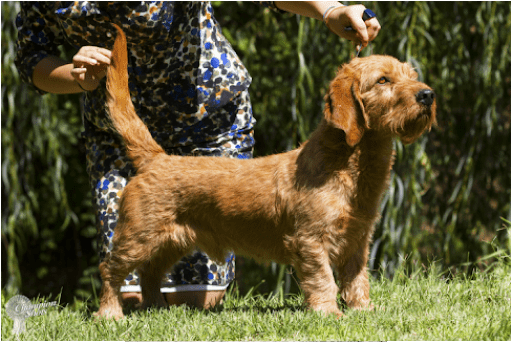
Basset Fauve de Bretagne dogs are highly intelligent. But you need to keep training sessions short and fun to prevent boredom from setting in. Positive reinforcement training combined with consistent commands will help you to get the most out of this breed. They can be a little stubborn when it comes to training but as long as you are patient, you will get there!
Because of their high intelligence and independent minds, the Basset Fauve de Bretagne needs to be trained and socialised as early in life as possible to become well-rounded, well-balanced, and confident dogs. It’s particularly vital to teach them the “recall” command. These dogs have strong hunting instincts so always be on your guard when outdoors! Start training when your puppy is 6-8 weeks old when they are still eager to please their new owners. Basic training like obedience and potty training should be established by 4 months of age.
The Basset Fauve de Bretagne’s coat is considered to be a “wash-and-wear” type because it’s wiry and coarse. It’s also very dense and harsh to the touch. These dogs shed a low-average amount of hair and need regular weekly brushing to keep the coat in good condition. So, they are not the best choice for allergy sufferers. They should also be stripped and trimmed by a professional groomer twice a year.
Due to their dense coats, the Basset Fauve de Bretagne does well in colder climates. During the summer months, keep to shady areas to prevent your dog from overheating.
Frequently check their ears for debris, dirt, and wax buildup. You can clean their ears weekly by using a damped cotton ball with an ear cleanser recommended by your veterinarian. Never push cotton swabs inside their ear canals because this can cause damage. If you notice any foul smell, swelling, soreness, inflammation, or they incessantly shake or scratch their head and ears, talk to your vet, as these may be signs of an infection.
Daily dental hygiene is still the best way to prevent tooth and gum diseases and bad breath. But twice weekly brushing is sufficient to get rid of any tartar and bacteria buildup. Ask for a recommendation from your vet on which dental products work best to efficiently clean their teeth, tongue, gums, and mouth.
Trim their nails once or twice a month (or as needed) to keep them clean and neat. While you trim their nails, examine their paw pads to check they are injury-free and healthy. Especially if your pup has been running around in thick undergrowth.
Furthermore, regularly examine their body as you groom them for any rashes, wounds, inflammations, and other indicators that they may have an infection or illness. Their eyes must be healthy, clear, and clean without soreness or discharge.
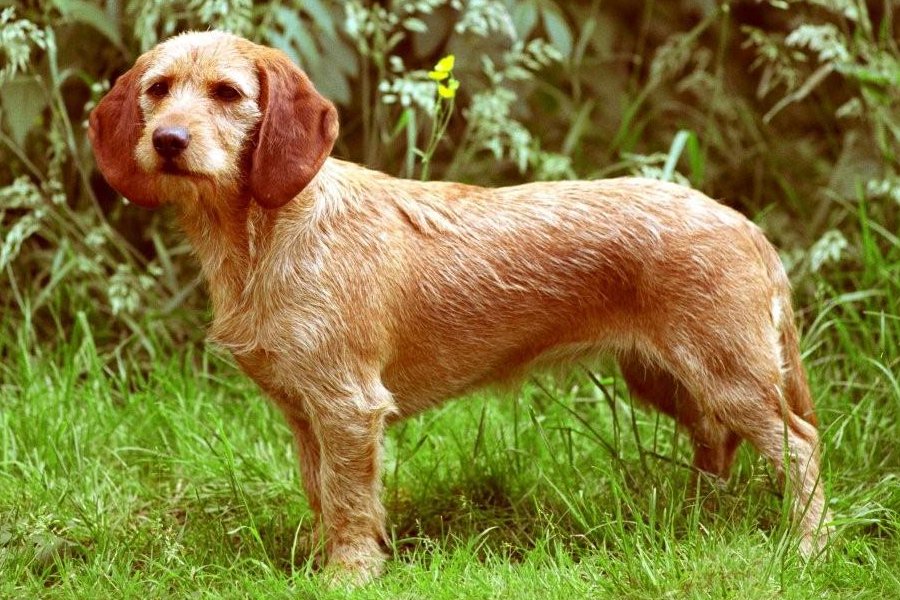
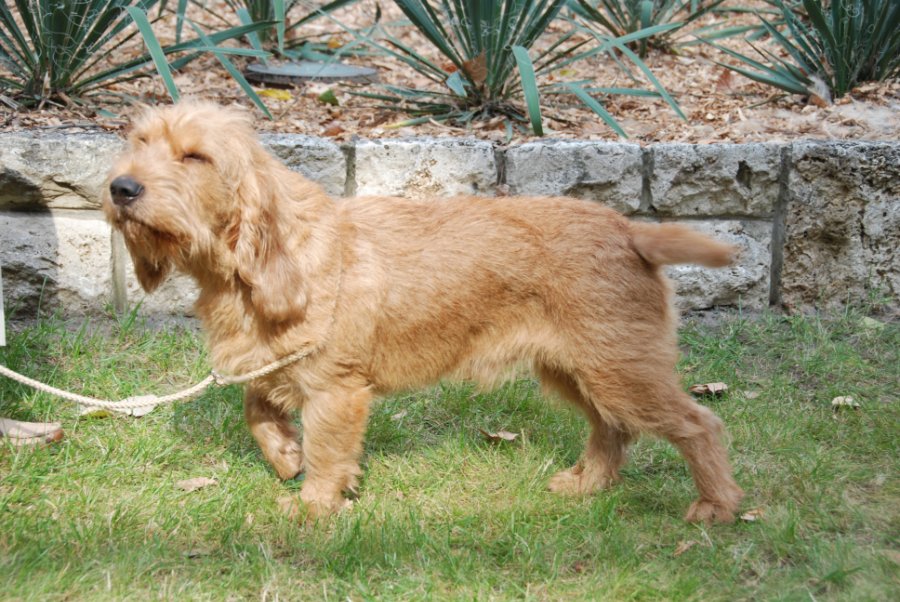
The Basset Fauve de Bretagne’s average life expectancy is 11-14 years, provided they are appropriately cared for. Only purchase puppies from a reputable and licensed breeder to make sure they have been properly weaned and socialised. Furthermore, a trustworthy breeder will also be able to check for any underlying health issues through DNA testing.
These energetic dogs are known to be healthy and robust. However, the Basset Fauve de Bretagne can develop some of the health conditions listed below:
The Basset Fauves de Bretagne is an excellent choice for families with children. However, because they are small to medium-sized dogs, they can easily be injured or wounded by very excited or boisterous children. Make sure you teach your children how to appropriately approach and handle small dogs to prevent any accidents. Also, it is advisable to supervise every interaction even if you have taught them well.
Living under one roof with other household pets is possible with a Basset Fauve de Bretagne. Just make sure that they are introduced gradually and in a controlled environment to ensure that everything goes calmly and smoothly. It is recommended that the Basset Fauve de Bretagne is socialised as early as possible because they are not naturally fond of being with other animals. But with familiarisation and socialisation done correctly, the Basset Fauve de Bretagne can get along fine with other dogs. Saying that, these dogs are not suitable for homes with smaller pets, like rabbits, because of their high prey drives.

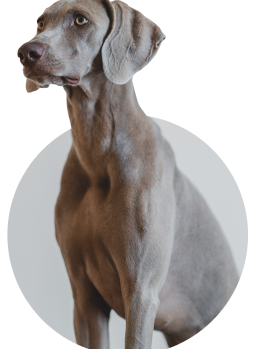
We can connect you with Breeders that are specialized in this particular breed.
See available puppies
France
Size : Medium
Coat : Short
Registration : KC, AKC, FCI
Exercise : 1 hour
Training : Medium
Grooming : Once a Week


Need some advice?
Whether you're a first time pet owner, an experienced pet owner, a new or long-time breeder, or just curious about pets, we've got you covered!
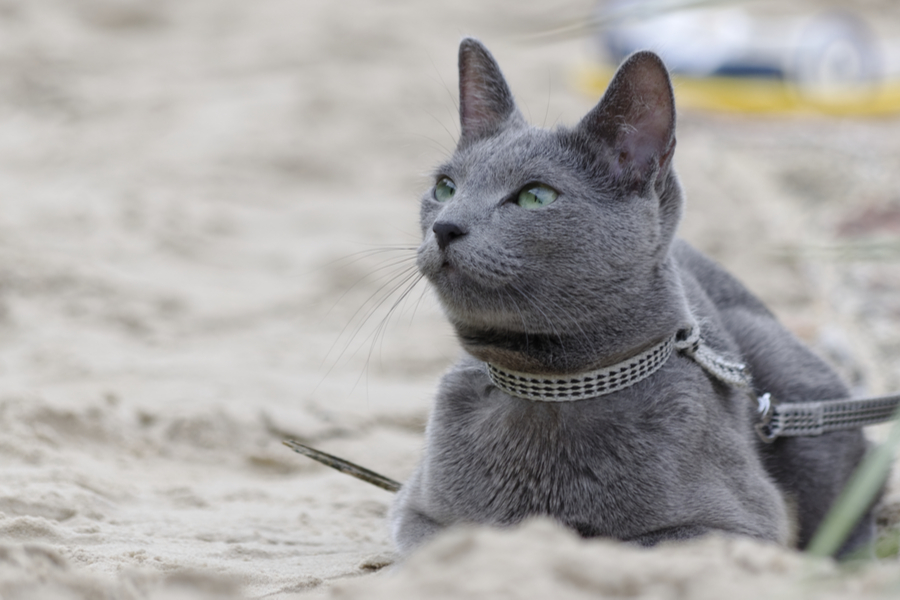
January 17, 2024
What Is The Personality Of Russian Blue Cats?
Russian Blue cats are most known for their distinctive shimmery blue-silver coat and piercing green eyes. However, this breed’s calm and gentle temperament is what makes them shine the most in the feline world.
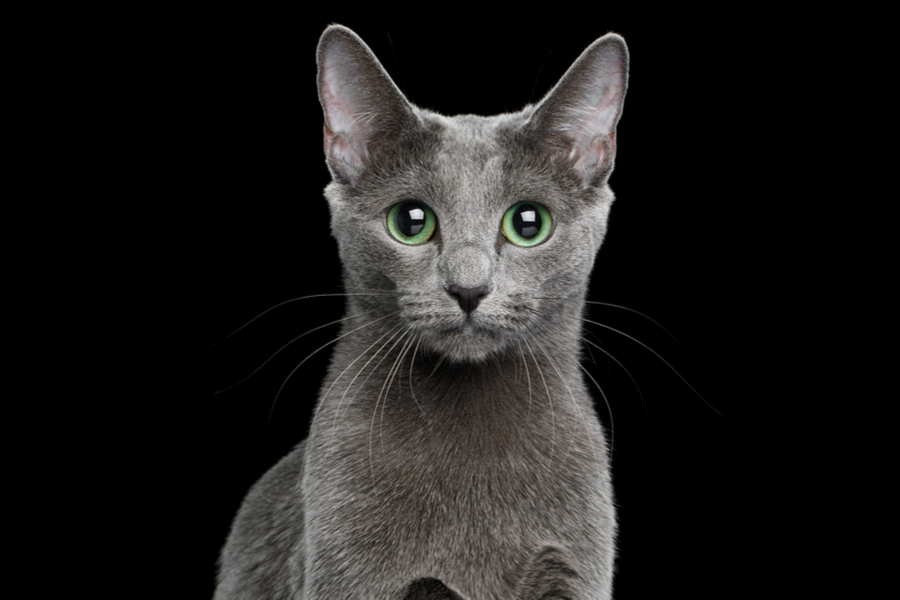
January 17, 2024
10 Facts About Russian Blue Cat Breed
Russian Blues are one of the most aesthetically stunning cat breeds, with a gorgeous plush silvery coat and vibrant green eyes. However, it’s not only their appearance that is beautiful; their nature is too.
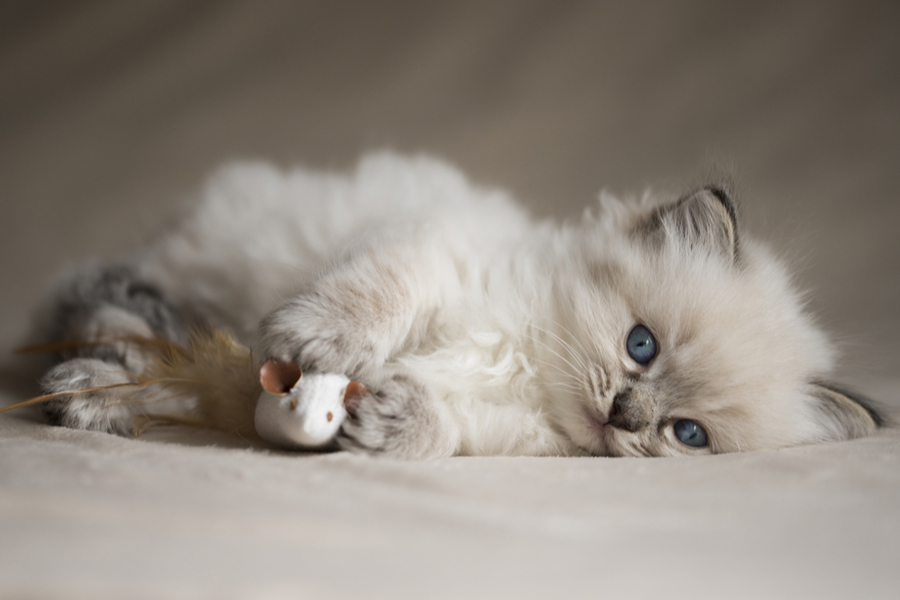
January 17, 2024
How To Choose The Right Cat Breed for You
Cats can make the most fantastic animal companions; they are adorable, friendly, and loving. However, not all felines are created equal. There are many different breeds, of which each has its unique personality traits.
Need some help?
Contact us to speak to our friendly advisor, who will gladly help you find your dream pet!



We are registered in England and Wales under registration number 12568840,
and our registered office is at 58-60 Kensington Church Street, W8 4DB London, England.
© 2023 The Pedigree Paws